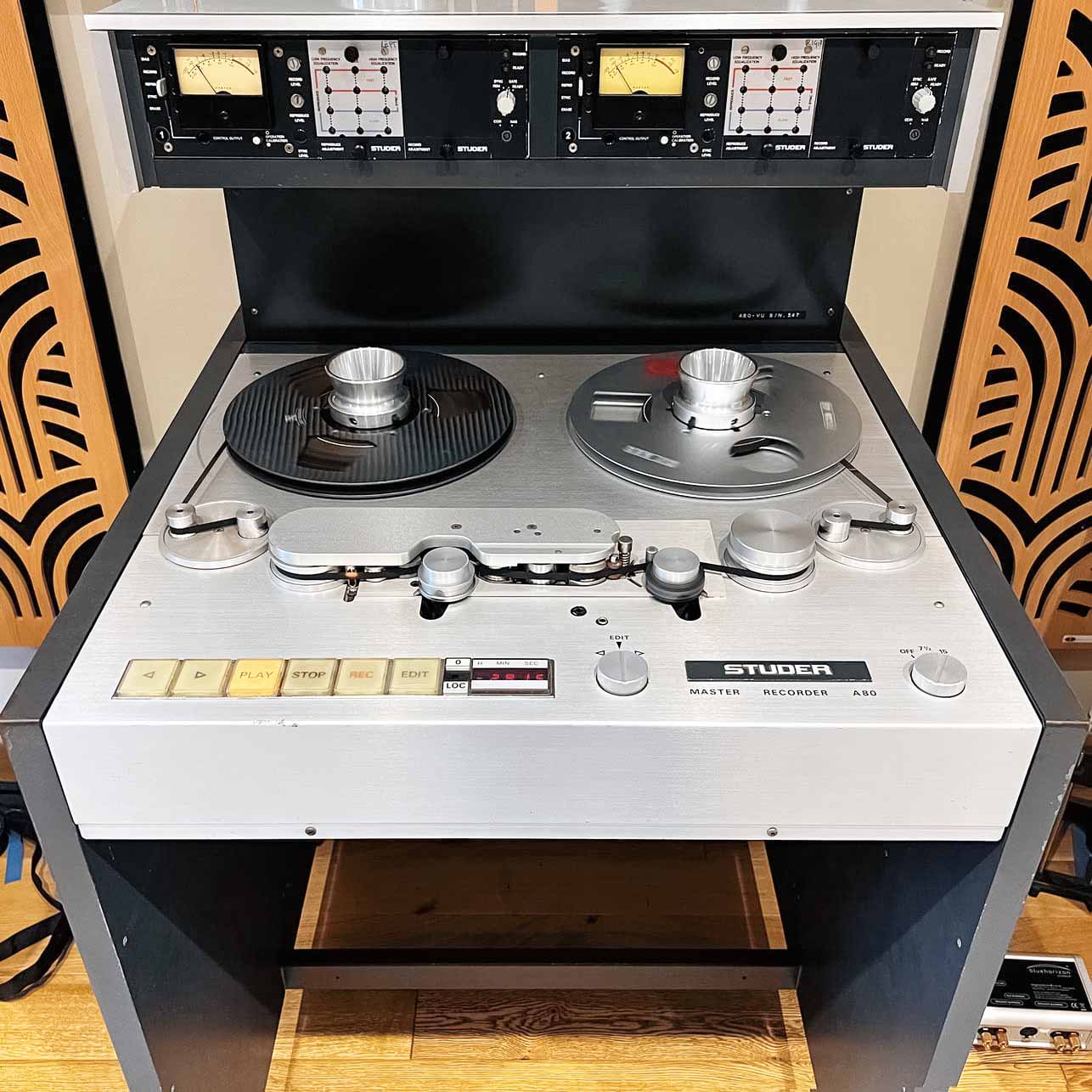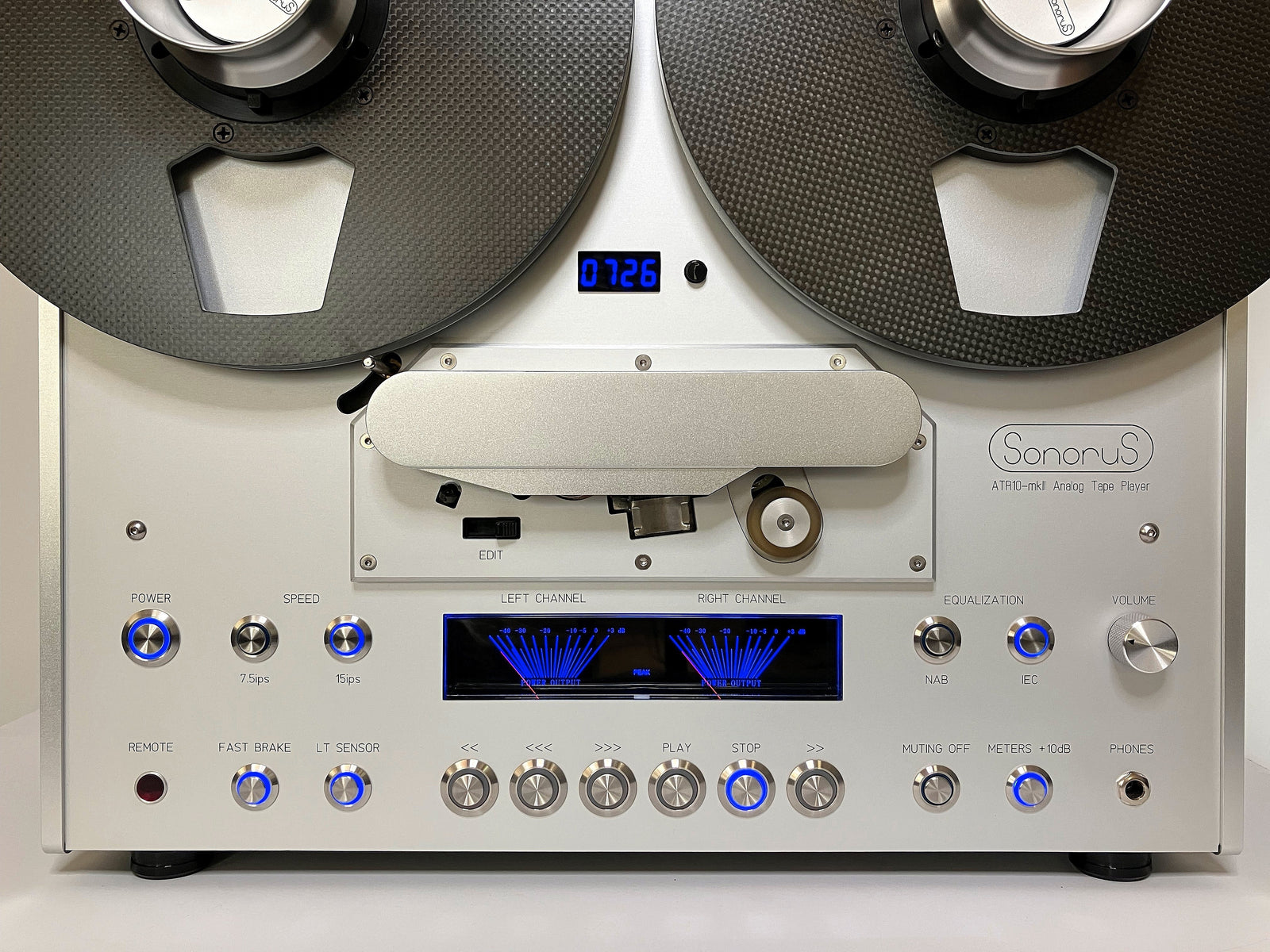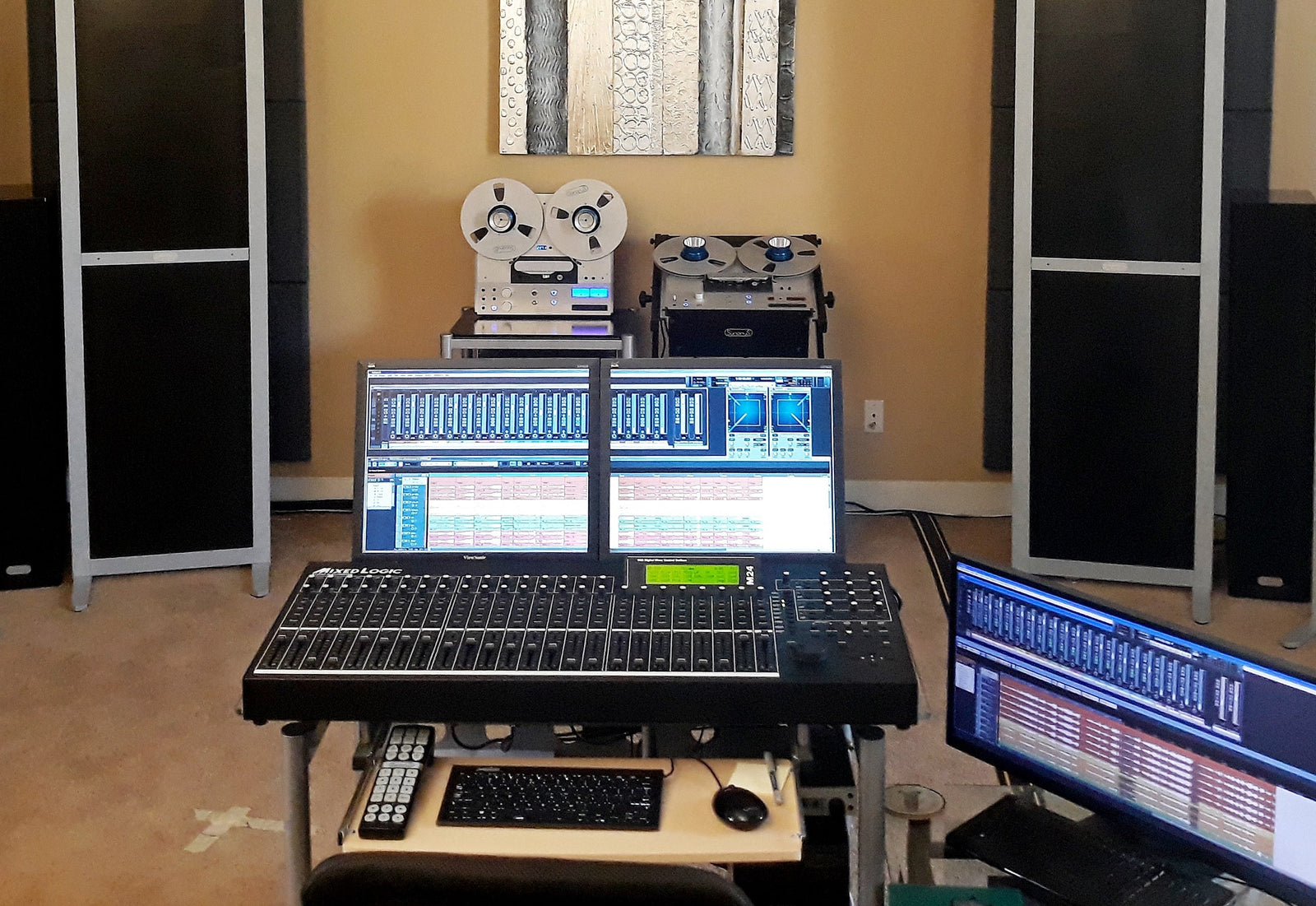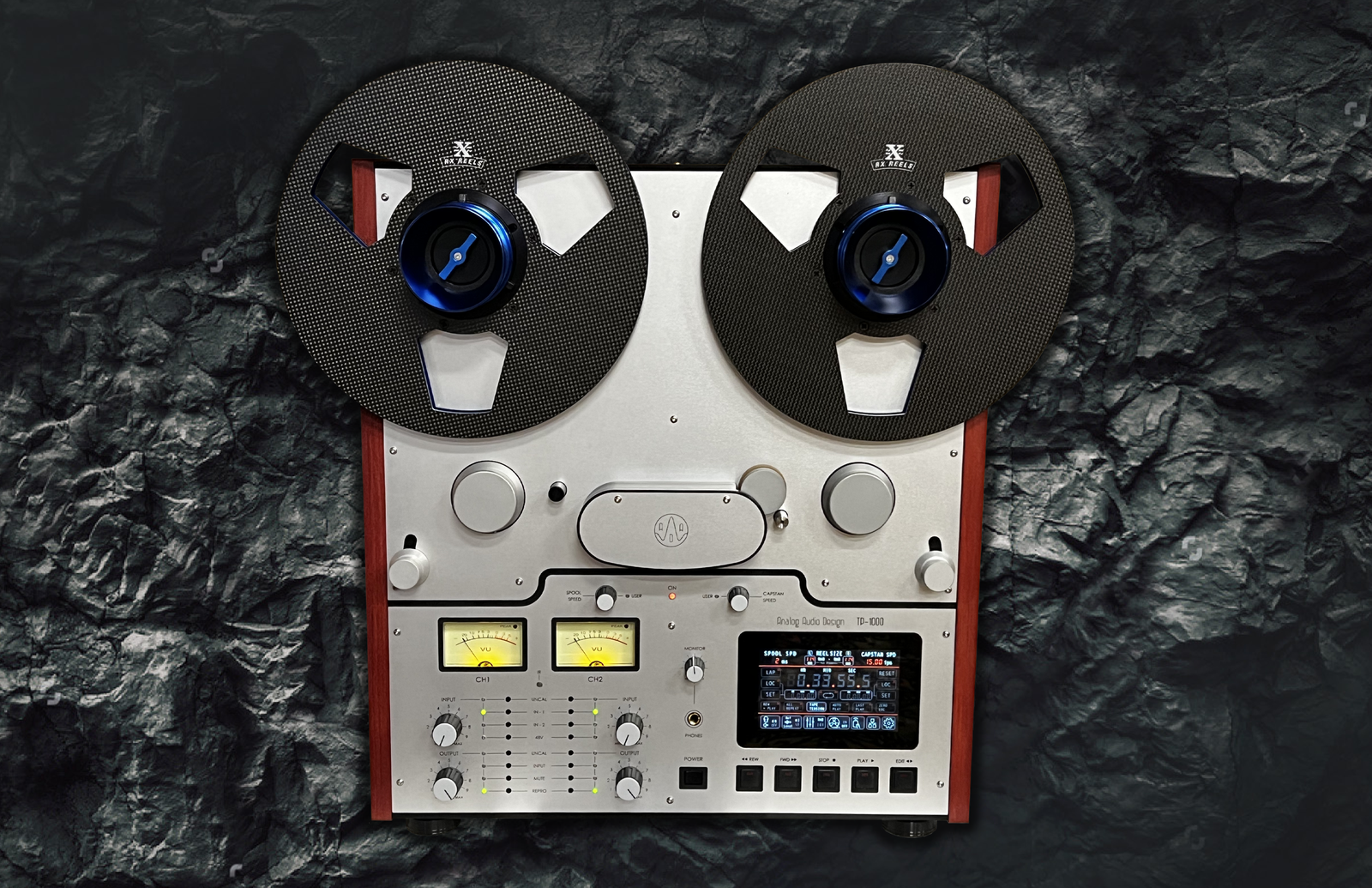Your Cart is Empty

Written by: Colin Teleman Created: August 27, 2022
So you have a whole stack of high quality reel-to-reel tape or cassette recordings that you've been storing in your basement since the '80's or maybe even the early '90's and you would like to remaster them to digital. Let's face it, reel-to-reel tapes degrade over time. It's just the normal aging process of the tape plastic. It may be very high quality plastic, and you may own some very high quality tape reels from TASCAM or Maxell. But these tapes were never designed to last forever. To boot, tapes also demagnetize. Which means loss of sound quality. Or just loss of sound completely. Fortunately, there is a way of re-mastering reel-to-reel and/or cassette tapes to digital, while not only preserving the original recording quality, but, in some cases, improving it. And in this very first Episode, I will explain how.
You Might Also Enjoy: Ken Kessler's Review of RX Reels 7 Inch Carbon Fiber Reel
Let's start with something relatively simple: The TASCAM Model 32 tape deck.
The remastering process would be identical if we were dealing with cassette tapes and a cassette deck. I got my TASCAM Model 32 at Reel-To-Reel Heaven. I have a large stash of reel-to-reel recordings of me - yours truly - playing classical music. Many years ago. I also have a stash of audio cassette recordings of me - yours truly - doing the same. Also many years ago.
Let's look at the back of the TASCAM 32. We see the 2 RCA Audio Out ports: L/R. We're all very familiar with RCA Audio Out ports, and we know how they work and what they produce: they produce unbalanced output. The Model 32 records in 2-channel stereo. That's what the output is going to be. Only, because the output is unbalanced, we will have to deal with the RIAA Curve. Time-out. I'm using a bunch of terms that may not be familiar to everyone. What is Unbalanced Audio Output: it's analog audio output that does not compensate for the RIAA Curve.
OK. What on Earth is the RIAA Curve.
Short answer: Long Story.
Long answer: In the early days of 33 1/3 stereo vinyl audio recording - think early stereo LP's from the 50's - sound engineers discovered that, when recording classical music to slow-speed 33 1/3 vinyl, low-frequency and high-frequency sounds were very difficult to record accurately without a significant shortening of available recording time - which, on average, is about 28 minutes per each side of vinyl. On top of that, accurately recording high and low frequency sounds to vinyl LP's damaged the reading head and the needle, because the depth of the grooves (on low-frequency sounds) caused the needle to keep jumping up and down too often and too much.
Why classical music: because classical music - piano and orchestral music in particular - use a very wide range of sound frequencies. This is why, on old 33 1/3 vinyl recordings, a Mozart Symphony always sounds better than any of Johannes Brahms' or Richard Strauss' or Mahler's orchestral works: Mozart's orchestration did not employ the wide sound frequency range that became available to orchestras in the mid to late 19th and early 20th Centuries.
So, the Recording Industry Association of America - RIAA - came up with a sound recording and playback encoding scheme that distorted significantly the original sound: during recording, low-frequency sounds were dampened (reduced), while high-frequency sounds were boosted. On playback, the RIAA Curve performs the opposite: it boosts low-frequency sounds, and dampens high-frequency sounds.
Have you ever listened to a vinyl LP recording connected directly to a pair of speakers, or a radio, without an amplifier, or pre-amplifier? It sounds terrible. You can barely - if at all - hear the bass, while the treble sounds like a dentist's drill.
Moral of the story: vinyl LP's are not meant to be listened to without an amplifier, or a pre-amplifier. The analog sound encoding that comes out of the RCA Out ports is not normalized to the RIAA Curve. That's the job of the amplifier, or the pre-amplifier.
This is what Unbalanced Output means: audio output that has not been normalized to the RIAA Curve.
Read more about the RIAA Curve here.
This is precisely what comes out of the RCA Out ports at the back of the TASCAM Model 32.
So first, we need to normalize the output coming out of the TASCAM Model 32.
We need a gizmo to convert the de-normalized audio output to normalized audio output. Here's the one I'm using.
That is the ART CLEANBox Pro Dual Channel Level Converter.
It does what you'd expect it to do: it converts de-normalized analog audio output to normalized analog audio output. If you take a closer look at the photos of the product, you will see two RCA In ports labeled "Unbalanced Input" on one side and two XLR ports labeled "Balanced Output 1/2" on the opposite side of the product.
The two Balanced Output XLR ports are the ports we'll be converting to digital from.
The normalization from unbalanced to balanced output may introduce a background humming sound ("hum"). It's very annoying, and it affects the quality of the conversion. It's not guaranteed that it will happen, but it's possible that it does. If it happens, there's another little gizmo that corrects it:
The ART DTI – Dual Transformer/Isolator.
What does it do: it eliminates hum. That's it.
How does it work: plug in the output cables from the CLEANBox Converter into the Dual Transformer's XLR Input ports. The de-hummed output will come out of the two XLR Output ports on the opposite side of the product.
Let's recap where we are at this point: we have obtained balanced audio output through XLR cables. We want to capture this balanced audio output, convert it to a lossless digital audio format, and save it.
And now comes the expensive part.

If you want to obtain a high-quality remastering from analog tape to digital, you will need a DAC.
There are many kinds of DACs. Some are cheap. They are also garbage.
The good ones are expensive. How expensive? In the USD $2,000 range. TEAC makes one that’s over USD $4,000. I’m not suggesting you should go out and buy it to start.
I own two DAC's:
1. The RME ADI-2 Pro FS-R Black Edition.
2. The TEAC NT-505-X USB DAC/Network Player.
For analog-to-digital remastering I only use the RME ADI-2 Pro. And that in spite of the fact that it is a major pain to use. Its menu interfaces are just not intuitive at all, to say the least but it has a Parametric Equalizer. And that is very important and useful to have during analog to digital remastering.
In terms of sound quality, I cannot tell the difference between the two. Both DAC's produce hi-fi audio quality sound. Both DAC's can upsample.
I use the TEAC for playback exclusively. It's very easy to use and set up, and it works out-of-the-box as an USB Audio Interface on Linux. No configuration required. Just plug and play. Linux recognizes it as an USB Audio device.
And now comes yet another decision point: the RME will accept Balanced Input from one of the ART devices - it has two XLR Analog Inputs. But: how do we save the remastered output?
Option #1 (cheaper): use the RME DAC as an USB Audio Interface. Connect it to your computer or laptop via USB 2.0, and capture and record with Audacity.
Here's the link to Audacity's USB Recording Manual Page.
I confess: this is not the method I am using. I use a TASCAM Recorder.
The TASCAM SD-20M.
Rackmount Solid State Audio Recorder with XLR Mic Inputs. Why am I using the TASCAM? Because it does everything for me. Connecting it to the RME's XLR Output ports is easy enough, and the TASCAM lets me choose the audio recording format (WAV of MP3), the bitrate, and the frequency. It saves the output to a SDXC memory card. That's SDXC and NOT Micro-SDXC.
The maximum accepted card capacity size is 128GB.
How do I use it? I simply connect the XLR outputs of the RME DAC to the XLR inputs of the TASCAM SD-20M. That's it.
And now a bit about recording format: I never use MP3. MP3 is a lossy compressed audio encoding format. Personally, I think MP3's time has expired. It was a useful format when storage was scarce and expensive - think Apple's early iPod's from 2001.
That's no longer the case today. Storage today is dirt cheap.
Initially, I tell the TASCAM S-20M to save all my remastered audio as WAV files, encoded as 24-bit floating-point at 192 KHz with 192,000 bitrate (bits / second).
Why WAV? Because it's not a compressed and/or lossy format.
Why this particular bitrate, sampling rate and frequency?
Let's start with audio CD quality. Audio CD's encode their files as WAV, with a signed 16-bit, 44.1 KHz sampling rate. This is the Standard Audio CD quality encoding.
Recently, major classical music recording labels such as Deutsche Grammophon, DECCA, Philips, Sony, etc, have started re-issuing their digital recordings in what they call "HiFi Audio Audiophile" quality. This new encoding is marketed as "Blu Ray Pure Audio".
What this really is: it's the original CD-Audio WAV recording, upsampled at the new frequency and bitrate.
Why FLAC? What is FLAC?
FLAC is a lossless, compressed audio encoding format. Unlike MP3, which is lossy and destroys the quality of your recordings, FLAC is lossless. While being smaller in size than WAV, FLAC maintains the same audio quality as the original WAV.

Before I proceed, I feel I must provide an important Disclaimer:
Throughout this blog, I have mentioned several products made by ART, RME, TEAC, TASCAM, Apple, etc. I do not currently work for any of these companies, and I have never worked for any of these companies, in any capacity whatsoever. I do not stand to gain, or profit in any way from mentioning these companies, or their products.
My recommendations are based exclusively on my direct personal experiences.
The process I've just described above works identically for a reel-to-reel tape deck such as the TASCAM Model 32, or for a cassette deck.
A detail to keep in mind: when remastering a cassette audio recording, the quality of the original recording, and its remastering will probably not match the quality of a reel-to-reel tape deck recording and its remastering. A cassette tape simply cannot hold the same amount of information as a reel-to-reel tape. Cassette tapes also have a somewhat narrower frequencies range.
But, I have successfully remastered audio cassette tapes, and the resulting output was quite satisfactory. Remastering cassette tapes required more post-processing work compared to a reel-to-reel recording.
That's it for today.
In a future episode, we may get to talk about recordings made on the TASCAM Model 48, and how to convert them to a digital format. Sneak preview: it’s much more complicated.
---
RX Reels prides ourselves on manufacturing the world's best carbon fiber reels. Learn more about us and why Ken Kessler in PS Audio Copper Magazine has said: "I must say that I have never seen any spools built like the RX spools, nor did I expect to see performance gains of the level which both the 10.5-inch and now the 7-inch delivered."
See RX Reels Carbon Fiber 10.5" and 7" reels here.
Looking for a great player? See Our Ultimate Guide to Reel to Reel Players


This post delves into the topic of making enhancements to the actual recorded media on reel-to-reel tape. Numerous vinyl albums have been remastered, and indeed, several hundred tapes have undergone remastering from the master or near-master. These offer notable improvements in sound quality compared to the original recordings. Sonorus Audio offers a Holographic Imaging tape remastering service explored here.

Analog Audio Design's first product, the TP-1000 is wholly constructed from new components, utilizing technologies such as computer-aided design and advanced testing tools to augment tape transport and minimize distortion.
The all important heads are from AM Belgium, the same company that inherited the head technical specs directly from Studer / ReVox when they shut down.
The TP-1000 stands out as a three-motor machine using DC motors, all uniquely coupled by a belt and a flywheel to a modern design. Why? To reducing the cogging and flutter commonly associated with DC motors.